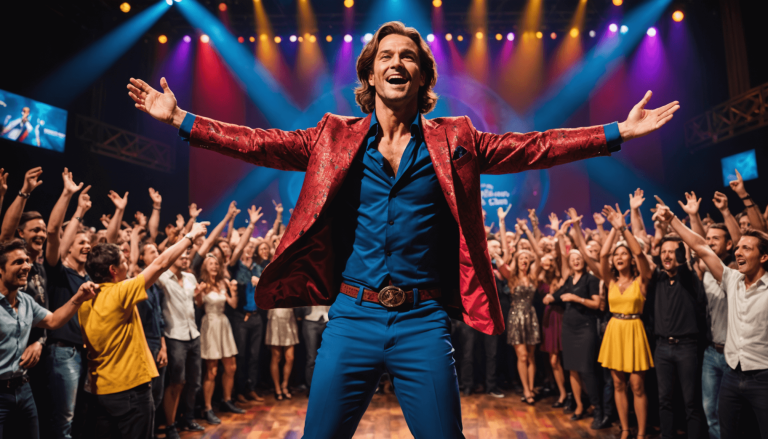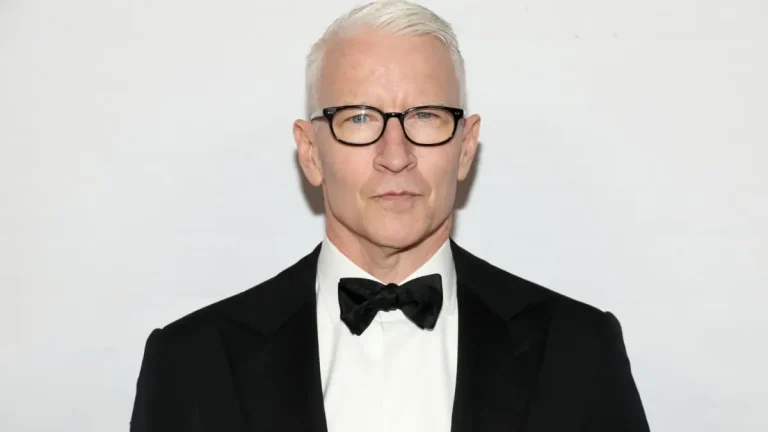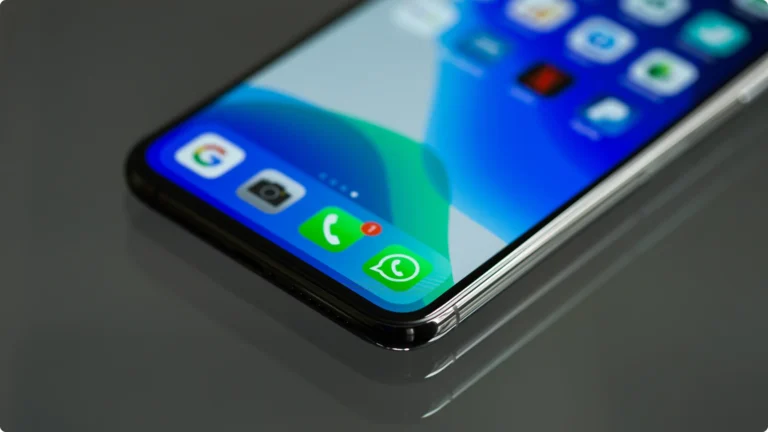Ever been one decision, one second, or one inch away from changing your entire life? That’s the kind of moment Eddie George lived through on the biggest football stage possible—Super Bowl XXXIV. We’re talking about an underdog team defying odds. The Tennessee Titans, a franchise still carving out its identity, running headfirst into the high-powered …
Eddie George’s Super Bowl Legacy Lessons on Life and Fitness

Ever been one decision, one second, or one inch away from changing your entire life?
That’s the kind of moment Eddie George lived through on the biggest football stage possible—Super Bowl XXXIV.
We’re talking about an underdog team defying odds. The Tennessee Titans, a franchise still carving out its identity, running headfirst into the high-powered St. Louis Rams offense, famously called the “Greatest Show on Turf.”
Yet, they stood tall.
And right in the middle of that fight? Eddie George. Not just a bruising running back—he was the heartbeat of a team chasing destiny.
This wasn’t a guy waiting on a miracle. He created chances. Made plays. Carried weight. Literally and figuratively.
And in the game’s biggest drive, he dragged defenders, moved the chains, and scored twice to keep the Titans in striking distance.
But then came that ending.
“One Yard Short.” Kevin Dyson reaching out. Mike Jones making the tackle. Time expiring.
That play was seared into NFL history. For some, it was heartbreak. For others, pure drama. For George—it was a turning point.
This isn’t just about football. It’s about mental toughness. It’s about how one moment can spark a lifetime of resilience, leadership, and reinvention.
Let’s break it down.
Introduction To Eddie George’s Super Bowl XXXIV Performance
The road to Super Bowl XXXIV wasn’t paved with dominance—it was built on grit. The Tennessee Titans weren’t even a blip on most radar screens during the 1999 NFL season. A wild-card entry. A new stadium. Fresh branding, still shaking off the dust from their Houston Oilers days.
What they did have, though, was Eddie George.
A 6-foot-3, downhill menace who churned out yards like clockwork. George wasn’t flashy—he wasn’t that guy making poster catches or breaking off 80-yard runs. He was the blueprint for consistency. Relentless. Predictable in the best way. And in the postseason, that’s gold.
From the Wild Card upset over the Bills (remember the “Music City Miracle”?) to knocking off the Colts and Jaguars—George became the Titans’ offensive engine. When it came time for the Super Bowl stage in Atlanta, he didn’t flinch.
The Rams took an early 16-0 lead. But the Titans didn’t fold.
George sparked the comeback with sheer will—turning cold, calculated runs into touchdown drives. His two scores brought them to the brink of history.
Then, it ended on that one famous play.
Kevin Dyson reaching. Mike Jones tackling. One yard.
You feel the weight of it? That wasn’t just a play. It was a metaphor—for how brutally close greatness can be, and for a man built to keep chasing it, long after game day lights went out.
Eddie George’s Super Bowl Game Highlights
When the Titans needed someone to break through the Rams’ front seven, they handed the ball to No. 27.
Twenty-eight times.
George ran for 95 yards and two touchdowns. Not gaudy stats on paper. But context? They tell the whole story.
- First touchdown: Capped off a 66-yard drive, shrinking the Rams’ lead to 16-6.
- Second touchdown: A physical, grind-it-out 79-yard drive, ending with George bulldozing into the end zone, making it 16-13.
- Final minutes: Helped position the Titans for a game-tying field goal, completing the largest comeback in Super Bowl history up to that point.
The Rams were bruised. The so-called “Greatest Show on Turf” had met “pound-the-rock” reality, and George was swinging the hammer.
This wasn’t finesse football—it was trench warfare. And George? He was the general.
Even when the box was stacked. Even when everyone in the building knew he was getting the ball. He still moved it.
But stats aside, what stood out was how teammates fed off his energy. On every carry, George fought like the game depended on it, and by extension, they did too.
That kind of leadership? You don’t measure it in yards.
You saw it late in that final drive. With seconds ticking, George helped set the stage for the shot at overtime. It didn’t land. But the fact it got that far? That ride back into contention?
That was Eddie George, leaving everything on the turf.
Legacy Of Super Bowl XXXIV In NFL History
We’ve seen dozens of Super Bowls.
But how many are remembered for one precise, heart-stopping second?
That’s what sets Super Bowl XXXIV apart. The “One Yard Short” finish? It’s up there with David Tyree’s helmet catch, Malcolm Butler’s goal-line pick, and Santonio Holmes tiptoeing the end zone.
It didn’t end with triumph for the Titans. But oddly? That’s what helped immortalize it.
Because real legacy isn’t always about winning.
It’s about how you show up.
And George showed up big time. His Super Bowl performance validated what coaches and fans had seen for years—he wasn’t just a good running back. He was a foundational player. A guy who answered when it mattered most.
That night cemented his status as one of the NFL’s most dependable postseason runners. It put his name on the short list of players who defined their era by work ethic, leadership, and sheer physicality.
Look across the history of the game. Few moments capture the stakes, the tension, and the drama of football like that last snap in Atlanta.
Here’s a table comparing iconic Super Bowl moments:
| Moment | Year | Impact |
|---|---|---|
| “One Yard Short” Tackle (Dyson/Jones) | 2000 | Defined Super Bowl XXXIV, symbolic of perseverance |
| Helmet Catch (Tyree) | 2008 | Led to Giants shocking undefeated Patriots |
| Butler’s Goal-Line INT | 2015 | Sealed Super Bowl for Patriots, changed legacy |
George’s legacy? It’s tangled up in this moment. Not because he fell short—but because he walked off that field with nothing left to give.
And even in defeat, everyone watching saw greatness in motion—unfiltered, raw, undeniable.
Eddie George’s Wellness and Fitness Philosophy
Post-NFL Transformation: Overcoming Challenges
What happens when the cheering stops? That was the uncomfortable question Eddie George faced after retiring from the NFL in 2004. Like many elite athletes, the physical toll of nearly 3,000 carries and year-round pounding caught up fast. What the public didn’t see was the behind-the-scenes wear and tear—aching knees, old injuries flaring up, and a body that suddenly didn’t bounce back like it used to.
It wasn’t just physical hurdles. George candidly admits to early financial missteps, learning the hard way that even Heisman winners aren’t immune to money pitfalls. These personal wake-up calls steered him toward a total wellness reboot—not just physically, but mentally, emotionally, and financially.
This post-NFL reality prompted a powerful shift. George began exploring how to not only recover his body but future-proof it. He sought long-term energy, mobility, and peace of mind without chasing youth in the gym. That pivot led him to yoga mats, nutrition books, financial planning classrooms, and eventually, mentoring others walking similar paths. His transformation became a blueprint: not for holding onto the past, but thriving into the future.
Eddie George’s Training Regimen for Sustained Vitality
During his Titans prime, Eddie George was the definition of old-school grit—grinding through defenders with horsepower legs and a pain tolerance forged in steel. But post-retirement, the same approach didn’t fly. Instead of doubling down on heavy lifting, he pivoted.
George’s current fitness philosophy leans into smart recovery over raw effort. His weekly routine includes strength training, cardio bursts, and most notably, yoga. Yes, the same player who once benched 400 pounds now credits downward dog and warrior poses for keeping him mobile into his 50s.
Yoga is more than stretching. It’s how George reboots his nervous system, sharpens mental focus, and releases tension from joints battered during his football days. There’s a humility in remembering how he couldn’t last 10 seconds in early sessions. Now it’s habit—and lifeline.
To minimize wear and tear, Eddie emphasizes these core practices:
- Mobility-focused strength workouts: Prioritizing compound movements over heavy isolation sets.
- Two yoga sessions per week: A mix of power flows and Kundalini for both strength and inner calm.
- Active recovery methods: Foam rolling, breathwork, cold plunges—all play a role in keeping him sharp.
This balanced mix allows George to stay functional, pain-free, and performative without pushing to the edge. It’s a fusion of intensity and preservation—a mindset that’s not just for ex-NFL stars, but anyone chasing longevity over flash.
Nutritional Discipline and Balanced Living
Forget crash diets or trendy detoxes—Eddie George’s approach to nutrition is all about consistency, balance, and eating with purpose. Breaking from traditional athlete meal planning, he commits to six small meals a day, each averaging around 500 calories.
Why? It’s about sustaining energy without crashes. These mini meals—anchored by lean protein, complex carbs, and fibrous veggies—keep blood sugar and insulin stable throughout the day. No energy spikes, no mid-afternoon slumps.
What George figured out, and what research backs up, is that smaller, frequent meals can help maintain metabolic momentum. Skipping breakfast, for example, has been linked to a 27% increase in heart disease risk. George doesn’t gamble on that. His daily rhythm revolves around fueling strategically, not reactively.
But here’s the twist—he’s not militant. He follows an “80/20” rule where 80% of his meals are clean, but 20% leave room for the real world—pizza nights, burgers, the occasional dessert with family. That flexibility keeps it sustainable.
For athletes (and non-athletes) looking to emulate George’s food game, here are three key takeaways:
- Fuel with purpose: Stick to lean proteins and whole foods to avoid energy dips.
- Plan, don’t deprive: You can enjoy your favorites—just not all the time.
- Consistency beats crash: It’s not about being perfect, it’s about showing up for your future self.
Through discipline, awareness, and a little room to breathe, George has built a nutritional lifestyle that supports his body—not just for workouts, but for years ahead.
Eddie George as a Mentor and Advocate for Holistic Wellness
Life After Football: Eddie George’s Coaching Career
When Eddie George took the reins at Tennessee State University in 2021, he wasn’t just coaching football—he was changing a culture. At a school tethered to rich HBCU tradition but struggling to hit win columns, George brought the same grit that defined his playing days.
By 2024, George flipped the script. TSU closed the season at 9–3, snagging a spot in the NCAA FCS playoffs and earning George Big South-OVC Coach of the Year. Players weren’t just getting physically tougher—they were becoming more self-aware, more financially literate, more prepared for life beyond the game.
His coaching style? Part motivational speaker, part strategist, part big brother. He’s hands-on during workouts but also leads workshops on mental health, money management, and character development. It’s football, yes—but with a vision for the full human, not just the athlete.
When asked what he’s building, George puts it this way: “I don’t coach kids for Saturdays—I coach them for real life.”
The impact is measurable. Top-25 rankings. National buzz. But more telling are the locker room conversations about dreams beyond the field—some want to act, some to open businesses, some to coach. George is planting seeds, and his influence is turning possibility into paths.
Advocating for Mental and Emotional Well-being
It’s easy to talk about squats and sprints, but Eddie George wants to talk about silence, reflection, and breath. For years, he’s been leading by example—showing young athletes that mental toughness isn’t about bottling emotions but understanding them.
Yoga isn’t just about stretching for George—it’s a reset button. Combining deep breathing with intention, it becomes a space to process, reflect, and let go. It’s why he incorporates mindfulness sessions for his team, pushing beyond the typical x’s and o’s.
He’s equally vocal about mental health. Gone are the days where toughness meant silence. George speaks openly about anxiety, pressure, and emotional fatigue—especially the kind athletes face post-career. It’s resonant. And needed.
By championing emotional well-being with the same passion he once brought to third-and-short, George proves that strength comes in many forms. The game may end, but self-care is for life.
Redefining a Post-Athletic Identity
So, what happens when the stadium lights fade and the roar dies off? That’s the fork in the road most athletes hit—some stall, some spiral, but a few evolve. Eddie George? He rebuilt. Not just as a guy who “used to play in the NFL,” but as a force in entrepreneurship, entertainment, and wellness.
Let’s get real. Many athletes get stuck chasing the past. George dove into what’s next. He hit Broadway as Billy Flynn in Chicago, shifting from bruising linebacker hits to choreographed stage charisma. Not a common pivot, but it shattered the idea that athletes are one-dimensional. He didn’t just learn lines—he owned the stage.
Now fast forward—he’s got his own firm, The Edward George Wealth Management Group. Why? Because George lived the mistakes firsthand. Financial fumbles aren’t rare in pro sports—they’re the unofficial sequel to retirement. Instead of hiding from that, he built a business to help other athletes avoid it.
And let’s talk about identity. George refuses to wear just one label. Football was a chapter, not the title of his book. He went from stacking carries as a Titan to stacking skills across industries. That kind of reinvention? That’s the blueprint.
He didn’t just redefine success after sports—he expanded the playbook for what a post-athletic life can be. He’s the proof that you can crush it in the NFL and still be hungry for decades after. The man’s not done. He’s just switched fields.
Eddie George’s Influence on NFL and Wellness Culture
It’s one thing to have a notable NFL career. It’s another to reshape how athletes think, live, and recover. Eddie George cracked that code. And yeah, “Eddie George Super Bowl” might make you think of that one-yard heartbreak. But his post-game mindset? That’s the real win we don’t talk about enough.
He didn’t just survive the grind of 2,865 NFL carries—he outsmarted the long-term damage. Instead of letting retirement sink him, he leaned into yoga, micro-meals, and mental health like a veteran CEO manages a startup—with intent, agility, and vision.
Here’s the kicker: George didn’t keep it to himself. He turned his own body into data. He showed pros and weekend warriors that active recovery isn’t a luxury—it’s a weapon. Joint mobility routines, 500-calorie meals, mindfulness cycles—his lifestyle reads more like performance art than rehab.
He’s showing current NFL players there’s more beyond brute strength. That being able to stay sharp at 50+ isn’t luck—it’s decision-making. He’s part of a growing lineage of mindset-first players. Think Larry Fitzgerald, Tom Brady, and George—guys who extended careers by evolving their wellness game.
This shift didn’t happen by accident. George is leading a culture turn in the league. Players are eating smarter, training smarter, resting smarter. Physicality meets psychology. Long gone are the days of retire-and-decline plans. George made being post-football cool. Healthy isn’t soft anymore—it’s sustainable.
The Power of Resilience and Reinvention
Everyone knows the “One Yard Short” moment. Brutal. Iconic. Heartbreaking. But here’s the twist—it didn’t crush Eddie George. It built the man.
Think about it. That loss should’ve been the defining moment. Instead, it was the launching pad. George walked off that field with the kind of pain you don’t get rid of—but you can build on it.
Instead of staying stuck in the “almost,” he rewired the narrative. That’s resilience. Not pretending the loss didn’t matter—but choosing to evolve regardless.
And here’s the takeaway for athletes and anyone grinding through setbacks: you don’t need the win right now to act like a winner. You need the guts to turn losses into fuel. George chased growth like it mattered more than rings—because for him, it did.
That moment in Super Bowl XXXIV? It made him a legend. But everything since then? That’s what makes him unstoppable.
Bridging Athletic Excellence with Everyday Wellness
When most guys leave the league, they carry more than memories—they carry pain, injuries, and bad habits. Eddie George flipped that switch early. He decided that post-NFL life would be better, stronger, smarter.
His playbook? Simple but savage in execution:
- Six meals a day—not for size, but for steady energy
- Yoga twice a week—yeah, even when it was humbling
- Mindfulness as a weapon—because mental stability isn’t optional
He’s laid out the template for former athletes and the everyday grinder: don’t trust one-size-fits-all fitness. Customize. Reflect. Adjust. George didn’t wait for a TED Talk—he became one.
Look around—every gym rat and weekend warrior chasing performance needs that reminder now. Dominating isn’t always about outlifting. Sometimes, it’s about outlasting. That’s George’s edge.
He merged peak athleticism with sustainable wellness. Not a gimmick. Just hard-won truths and deliberate living.
The Enduring Appeal of Transformational Sports Stories
Everyone loves a good comeback. But it’s the transformation stories that stick with us. That’s why the Eddie George Super Bowl legacy still hits hard—it wasn’t about the score. It was about the shift.
You remember that image—Kevin Dyson lunging. Mike Jones tackling. One yard short. But it’s the post-game George who’s more impactful than the on-field beast.
His journey resonates because it tells us something bigger than football: pain isn’t permanent, but purpose is.
Eddie George is the guy who said, “Watch how I handle it,” instead of “Why me?” That mindset? It’s universal. Applies whether you’re chasing gains in the gym, growth in your business, or clarity in your life.
Sports have always been metaphors. George just made the metaphor real. A man who took every inch of his platform—on-field, on stage, in life—and made something bigger than stats.
He’s more than a chapter in Super Bowl history. He’s a living case study: how to chase greatness, how to lose with grace, and how to come back stronger than before.






